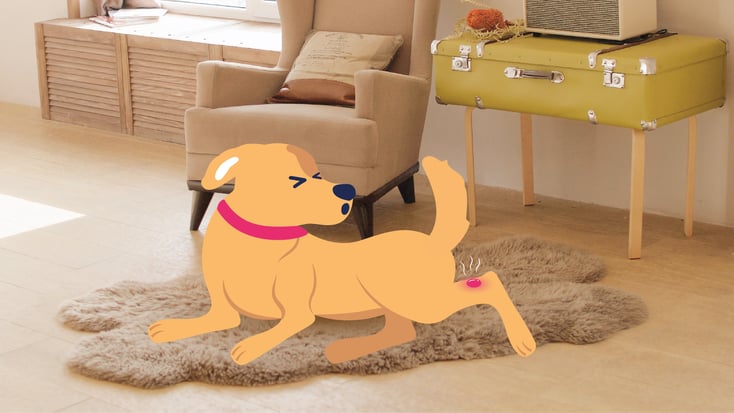Mast Cell Tumors in Dogs: Symptoms & Treatments

Table of Contents
Finding a lump on your dog is extremely worrying, and all pet owners fear the worst when it comes to finding out what it is. While many lumps are benign, there are also lots of skin cancers that we worry about. Mast cell tumors are one of the most common types of skin cancer in dogs, so let’s learn a bit more about them.
What are Mast Cell Tumors?
Mast cell tumors arise from mast cells, which are typically found in the skin. Mast cells are involved in inflammation and histamine release, so, commonly, mast cell tumors cause skin irritation for dogs and they can be red, swollen, or even itchy. They often fluctuate in size, making them tricky to find. Mast cell tumors can spread to other parts of the body if not diagnosed and treated promptly. Commonly cancer in dogs will spread to the lymph nodes, spleen, and liver.
We don’t know why dogs develop mast cell tumors. Some breeds are genetically more susceptible, for example, Boxers and Beagles. Some dogs may have a mutation in a protein called tyrosine kinase protein, which can lead to the development of mast cell tumors. Middle to older dogs are more likely to develop mast cell tumors than young dogs, and it’s common for dogs to suffer from more than one in their lifetime.
Symptoms of Mast Cell Tumors
Mast cell tumors can occur anywhere on the body, and are common around the chest and legs, but can also occasionally be found on the spine, eyelids, salivary glands, digestive tracts, and urethra.
Symptoms of mast cell tumors include:
- A raised lump on the skin
- The lump may change in size
- Redness or inflammation around the lump
- Itching around the lump
Paraneoplastic syndrome is sometimes seen in dogs with aggressive mast cell tumors. Cancerous mast cells release a lot of histamines, which can cause inflammation elsewhere in the body. Histamine causes the stomach lining to produce more acid than normal which can lead to vomiting, gastric ulceration, or dark/black stools. Vomiting or other gastrointestinal symptoms can often come and go as histamine production changes.
Diagnosing Mast Cell Tumors in Dogs
A diagnosis is essential to decide the most appropriate course of treatment for your pet. Mast cell tumors can be diagnosed by taking a small sample from the lump on your dog’s skin. The vet may do this by taking a fine needle aspirate – this is when they insert a small needle into the lamp to collect the sample which can then be sent away to a lab. This procedure is usually quick and easy, and your pet will not need sedation.
Sometimes, a biopsy is needed to gain a definitive diagnosis, which is usually done under general anesthetic or heavy sedation. This is usually the easiest way to not only gain a diagnosis but also for the mast cell tumor to be graded and staged.
Grading Mast Cell Tumors
Mast cell tumors are graded according to strict criteria. There are 3 grades of mast cell tumors from 1-3. The higher the grade, the more aggressive cancer and the more likely it is to spread to other parts of the body via the blood and lymphatic system.
Often, to accurately stage a mast cell tumor and assess for spread to other organs, further imaging, and testing is needed including chest x-rays, abdominal ultrasound, sampling of the lymph nodes, and CT scans.
Treatment for Mast Cell Tumors in Dogs
The treatment for mast cell tumors depends on the grade and stage, which is why diagnostic testing is so important.
Surgery to remove the primary lump is vital, taking wide margins to ensure no cancerous cells are left behind. In many cases, this can be curative, and the prognosis is very good. However, sometimes complete surgical removal is not possible, or a mast cell tumor is more aggressive.
Radiotherapy and chemotherapy are often used to shrink a tumor before surgery and to reduce the risk of spread after surgery. A new type of drug called tyrosine kinase inhibitors is also available for some patients – they block the proteins found on the surface of cancerous mast cells to prevent them from growing and multiplying. Most dogs tolerate chemotherapy drugs very well.
It’s very common for mast cell tumors to come back even after treatment, so it’s important to check your dog regularly and get any lumps checked by your vet.
In summary, mast cell tumors are a common type of skin cancer in dogs that can vary from a very low-grade to a high-grade aggressive cancer. Surgery is required to remove the tumor, and depending on the grade, some dogs need radio or chemotherapy. There is a risk of mast cell tumors spreading so early detection and treatment is essential. Many dogs have a very good prognosis after treatment, but more aggressive cases can be harder to treat. If your dog has a new lump, it’s important to get it checked by the vet as soon as possible.
Frequently Asked Questions
How can I tell if my dog has a mast cell tumor?
If you have found a lump on your pet, you need to get it checked by a vet as soon as possible. The best way to diagnose a mast cell tumor is by taking a sample as a fine needle aspirate or taking biopsies to be analyzed at a lab.
Are mast cell tumors painful?
Mast cell tumors can be itchy and irritating for dogs as they produce histamine. After surgery, dogs can be slightly painful around the wound. You can assess your pet at home and speak to your vet if you think your pet is in pain.
How are mast cell tumors treated?
Surgery is required to remove the mast cell tumor. Depending on the grade and stage of the cancer, radiotherapy, chemotherapy, or further surgery may be required.





